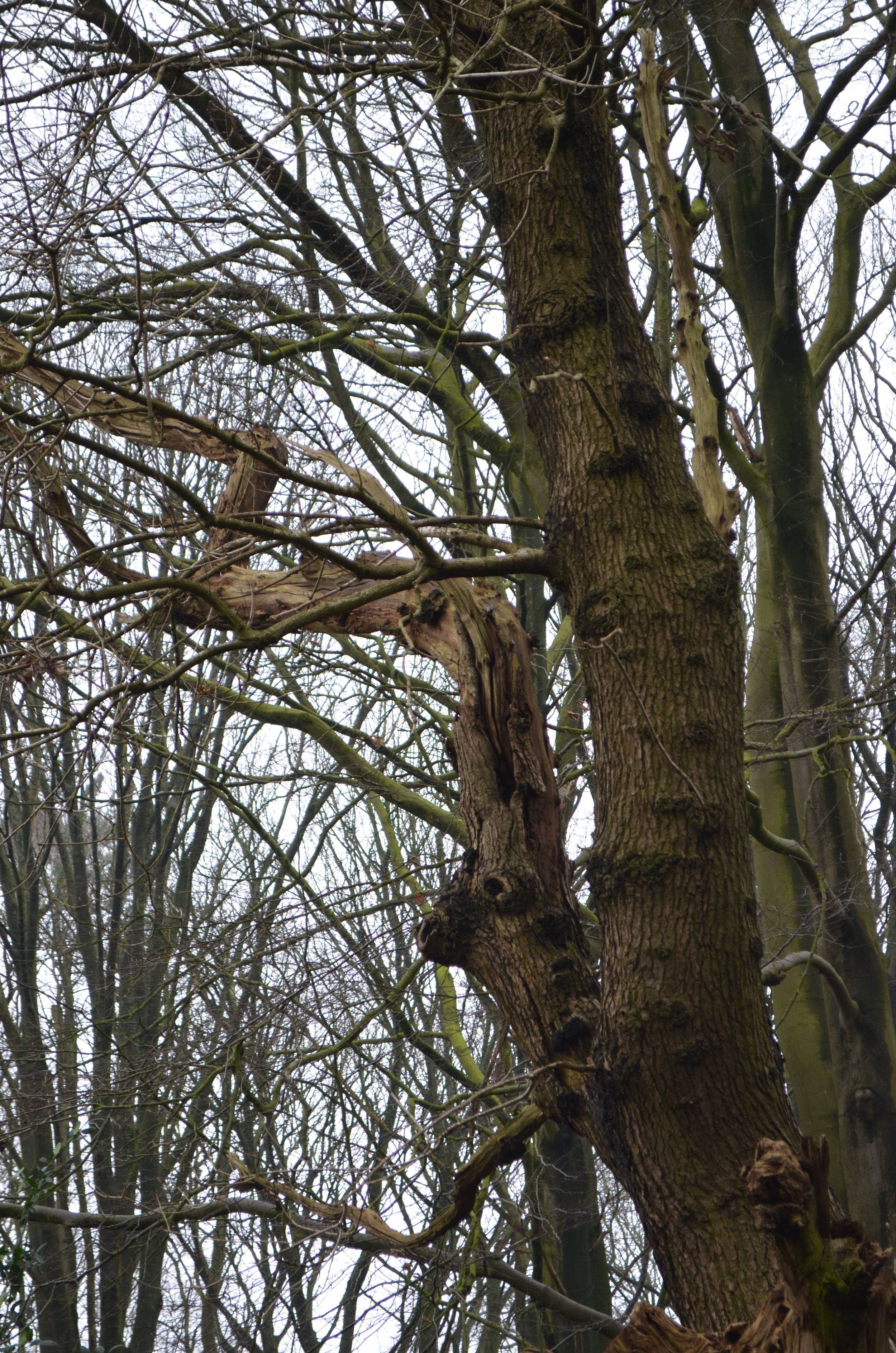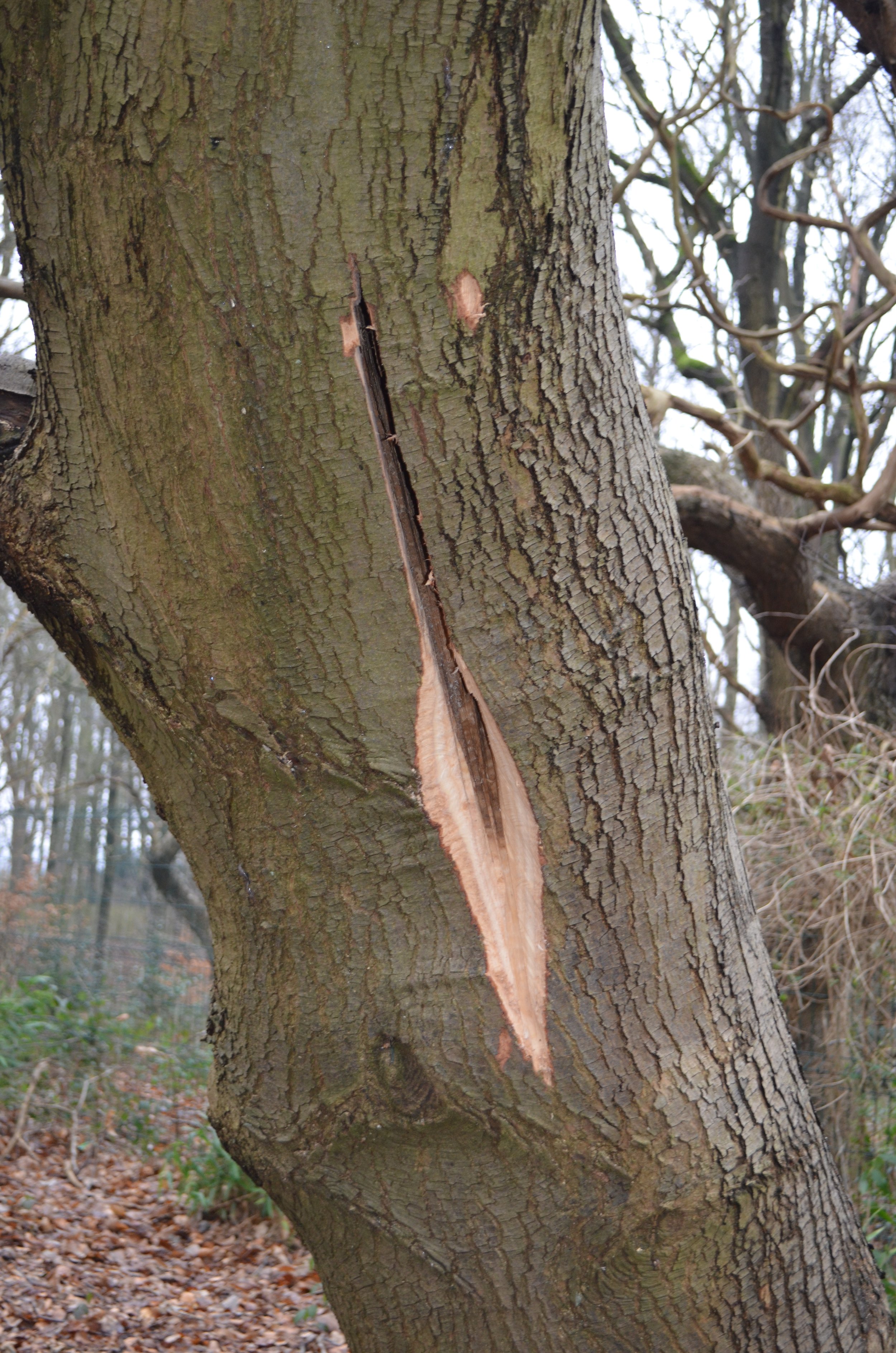Features in trees….
Nottinghamshire woodland isn’t as healthy as it could be..
Wildlife needs the full life-cycle of trees to meet the diverse needs of its’ inhabitants, from seedling through adolescence to maturity to dead wood.
Our garden woodland is a case in point.
We have young trees planted recently as well as those planted after WWII.
But older specimens are missing and so are the opportunities that older trees provide for birds, invertebrates and mammals - including bats.
This boundary oak has many natural cavities that can be used by wildlife for protection and breeding..
South facing slit in Scots pine
Mature trees have been ‘knocked about a bit’ by nature. There are branches that have broken. Rot holes. Cavities and crevices that are the natural result of facing the elements, season after season. All these are bespoke residences for woodland fauna which have co-evolved to take advantage of this habitat.
This weekend, our friends from Nottinghamshire Bat Group (NBG) joined us to create ‘features in trees’ as described by Jim Mullholland (Director of Bats Research and Training). The work done on our trees is part of what is now sometimes called ‘veteranisation’.
West-facing slit in sycamore showing wider entrance..
This time, Kyya, a bat group volunteer and professional arborist, worked with the team to create low cavities for bats. Although the RSPB in Sherwood are engaged in a process of ‘veteranisation’ of their tree stock, as far as we know, there’s nothing quite like what Kyya and the team are trialling with us in Nottinghamshire.
Kyya first created a metre-long vertical cut, then widened and deepened it to about about 12 cm.
The bottom of the slit was widened to give bats access to the cavities after the narrower wounds above have healed.
Sycamore slit showing scale of opening..
North-facing cavities were created to act as winter sites for bats for torpor or hibernation. In winter, bats prefer north-facing cavities, low-down on trees as these provide a more stable temperature than cavities higher in the canopy.
I learned subsequently from Jim that bats choosing north-facing sites for winter roosts is a misconception!!
Those on the south face of the trees would be more suitable for summer use.
These cavities could be home to a range of the smaller bats including common and soprano pipistrelle and brown long-eared bats among others.
Five species of tree were trialled and will be available for visitors to see. We’ll keep a photo record of the progress of the cavities as well as looking out for any bats that visit.
This, of course, is specialist work and shouldn’t be tried at home without a professional…
Now we wait!!
Thanks NBG!!
This fascinating set of videos of the work of Jim Mullholland can be found here:
https://www.youtube.com/@Batsintrees
His blog is worth visiting too:




